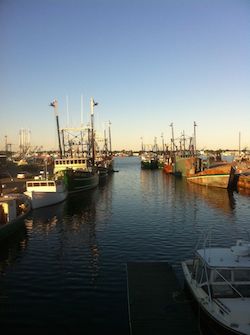When I started working for National Fisherman, I lived about an hour south, and gas prices were going where they've never gone before. That was early 2011, when the national average hit a new record of $3.51 a gallon. It rose again to $3.61 in 2012. My solution? I moved.
Not everyone can solve that problem so easily. At the same time I was watching my paycheck disappear at the pump, I was also beginning to understand how significant gas prices are for commercial fishermen.
The cost of gas is not just a concern for fishermen. It also factors into fishing's sustainability. To find out how much, two researchers, Robert Parker, a Ph.D. student at the Institute for Marine and Antarctic Studies at the University of Tasmania, and Peter Tyedmers, an ecological consultant at Dalhousie University in Halifax, Nova Scotia, looked into which fisheries use the most gas and why.
In their article, "Fuel consumption of global fishing fleets: current understanding and knowledge gaps," published in Fish and Fisheries, Parker and Tydemers looked at more than 1,600 records of fuel use by fleets worldwide and then ranked fisheries by the average amount of fuel it takes to land a metric ton (about 2,200 pounds).
Scallop draggers in New Bedford, Mass. Photo by Melissa WoodSome have it worse than others. You might be surprised to see that shrimp and lobster hold the No. 1 spot as the most fuel-heavy fisheries. But keep in mind the study looks at averages for fisheries worldwide. While Maine lobster requires an average of 206 gallons* of fuel per metric ton, there are fishermen in Norway who need almost 4,500 gallons of gas to catch a metric ton of lobster in the North Sea.
Similarly, fishermen in Australia require 1,850 gallons to catch a metric ton of Asian tiger prawns. As Science Magazine writer Erik Stokstad points out, both of these species are small, scarce and widely scattered, greatly upping the cost it takes to bring in a boatful.
Not surprisingly, fishing methods and gear also factor into fuel costs. Some of the most fuel-intensive fisheries are scallops and flatfish, because they require heavy engine-wearing dredges. Their fuel costs are, respectively, 140 gallons and 750 gallons per metric ton.
The Prius of fisheries isn't surprising either. Parker and Tyedmers found that fisheries closer to shore with abundant catches use the least amount of gas. That is the case for Peruvian anchovies. Fishermen who catch them use the least amount of gas — about 2 gallons of gas per ton — of the fisheries studied.
Check out Stokstand's article if you'd like to find out more about the study. I was glad to see he also provides some perspective about fuel use in fisheries: Though those costs are a big deal for fishermen, in the larger earth-destroying sense they're actually not bad. While the average environmental impact of catching fish is similar to other proteins, beef's carbon footprint is five times higher. Scientists have been pointing to that industry as a significant driver in climate change.
I've seen the cost of fuel dictate where you fish, where you dock your boat and even what kind of car you drive to get to and from the dock. All over, commercial fishermen are adjusting how they fish and investing in new technologies to reduce their fuel costs. Fuel prices will continue to be a challenge, but I'm sure commercial fishermen will continue to find ways to make it less of a drag.
*I've converted the study's liters to gallons for this post.







